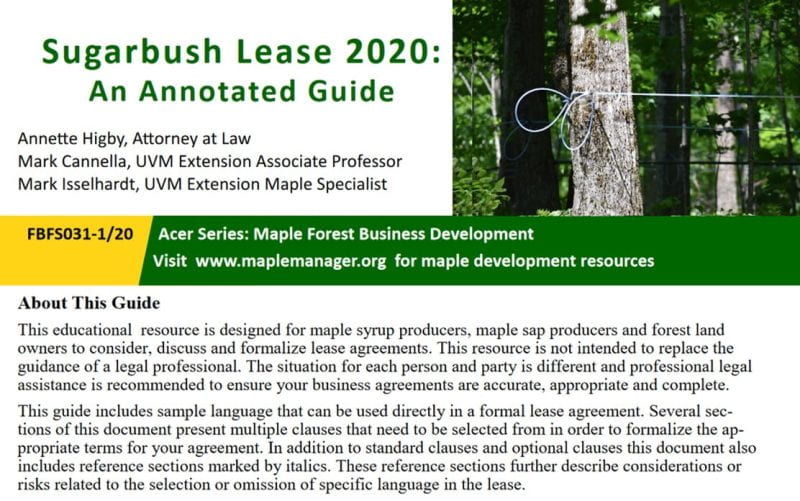Maple Boot Camp rotated over to Pennsylvania for 2023 after we hosted it last year in ’22. The agenda delivered a wealth of information to 20+ lucky attendees who came from backgrounds of “I’ve never tapped a tree before” to “I’m looking to expand into that medium-large producer category.” Speakers from Ohio, West Virginia, and Pennsylvania served to make Boot Camp a huge success – a special thanks to Mike Lynch of Baer Brothers Maple for hosting the in-field workshops in his sugarbush and sugarhouse.
Kate Fotos, Les Ober, and Mike Rechlin taught a maple grading seminar to attendees who elected to show up early for a pre-Boot Camp workshop. Day 1 covered discussions of tree identification, site and woods evaluation, sugarbush inventory, and tree health assessments, and spanned indoor sessions with outdoor hands-on lab time. After a wonderful catered dinner, Steve Childs tackled night one of value-added maple products and demonstrated maple sugar and maple cotton candy. Here is a link to the New York State Maple Confections Notebook that is a testament and legacy to his lasting impact on the maple industry across the region.
Day 2 kicked off with a flipped itinerary to accommodate weather conditions that were less than favorable. Kudos to everyone’s flexibility and Scott Weikert’s boldness to turn the agenda on its head. It is hard to imagine the day going much better than it did! While night two of maple confections featured maple cream and maple candies back in the meeting event space, the vast majority of the day took place in the sugarbush at Baer Brothers Maple. Sap collection methods and detailed demonstrations of installing and maintaining main line, lateral line, and drop and spout configurations filled the morning. After a bagged lunch, best practices related to tapping and sanitation practices took center stage. Semi-structured lectures interspersed with lots of hands-on demonstrations and opportunities for workshop attendees to try their own hands at different skills and techniques carried the day.
While I was not able to stick around for the third and final day, everyone once again caravaned out to Mike’s sugarhouse to see his reverse osmosis and evaporator set-up. This is such an important component of workshops, but due to time of year, sometimes gets the short end of the stick. Not this time. Mike had his system primed with water to get all the steam and the burn which takes an off-season experience to the next level. Attendees were lucky to enjoy an afternoon closing session on financial planning, operation economics, sales and marketing from one of the best in the industry – Mark Cannella from UVM.
Planning for Maple Boot Camp version West Virginia is already afoot for 2024 – as details begin to fall into place, you can be sure we will share all of the relevant details!





















